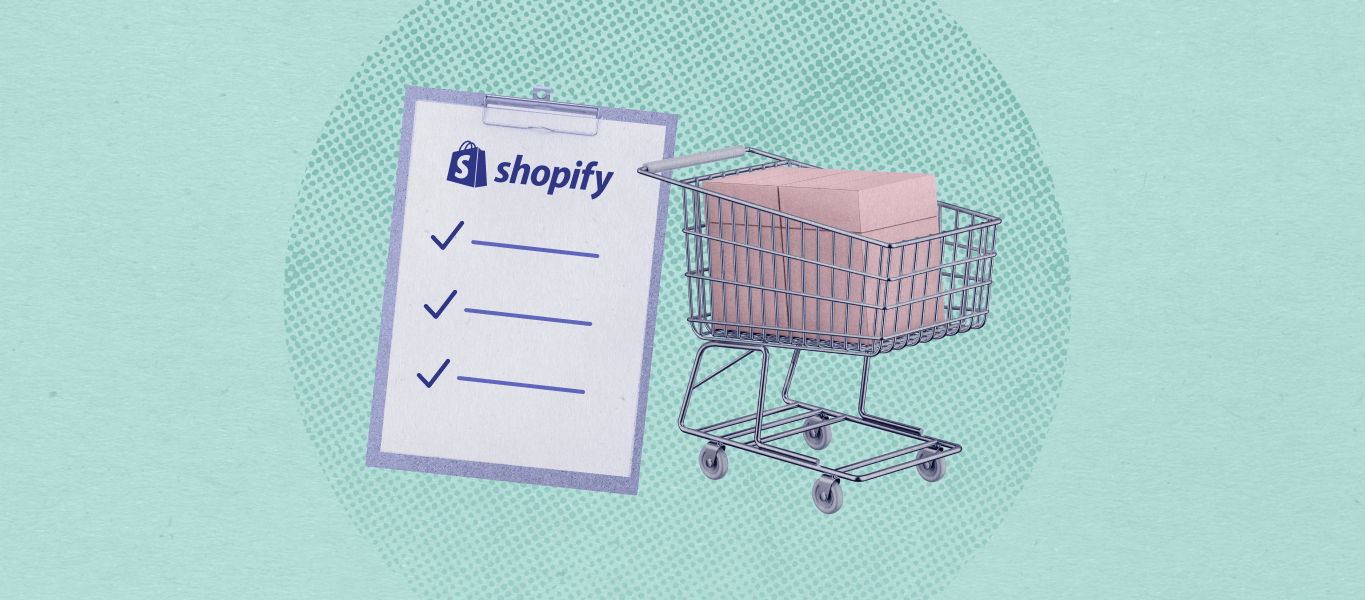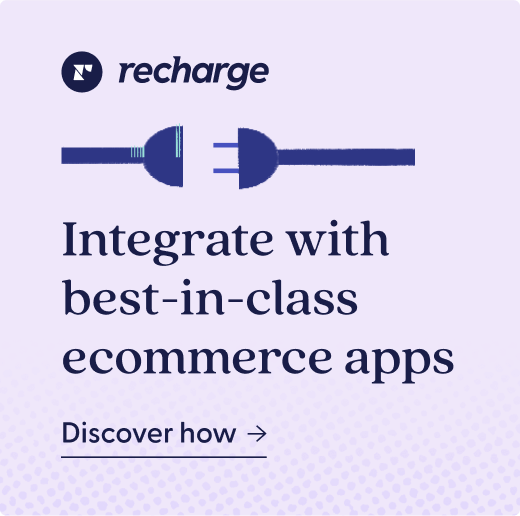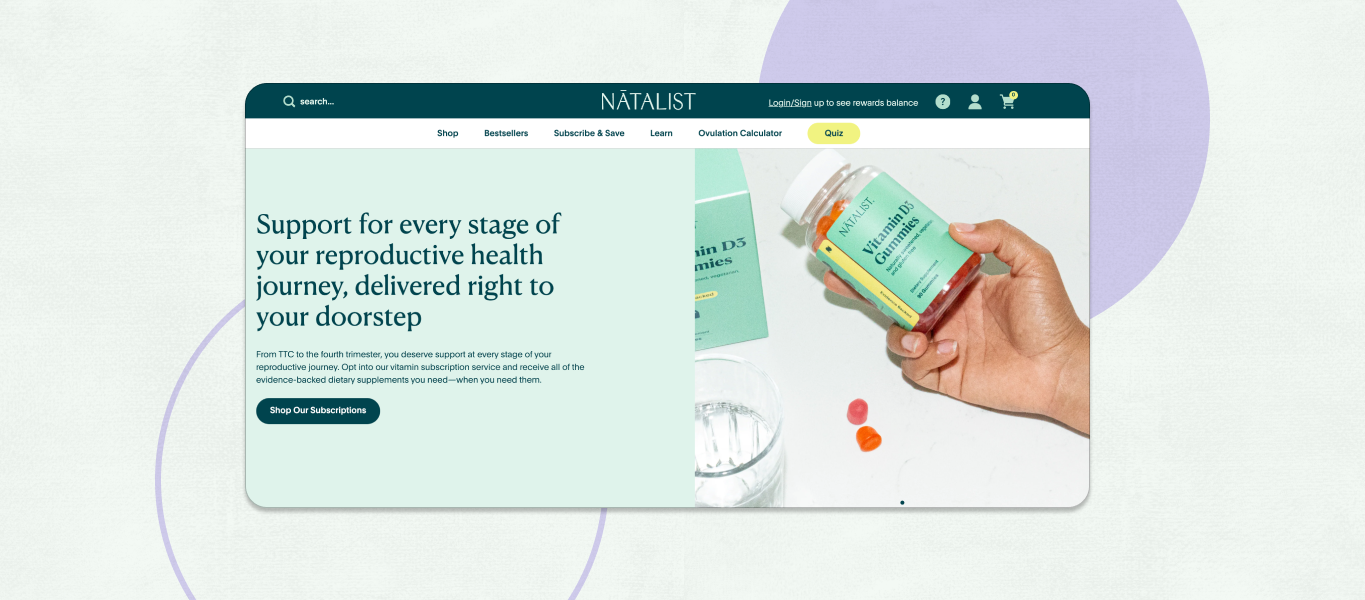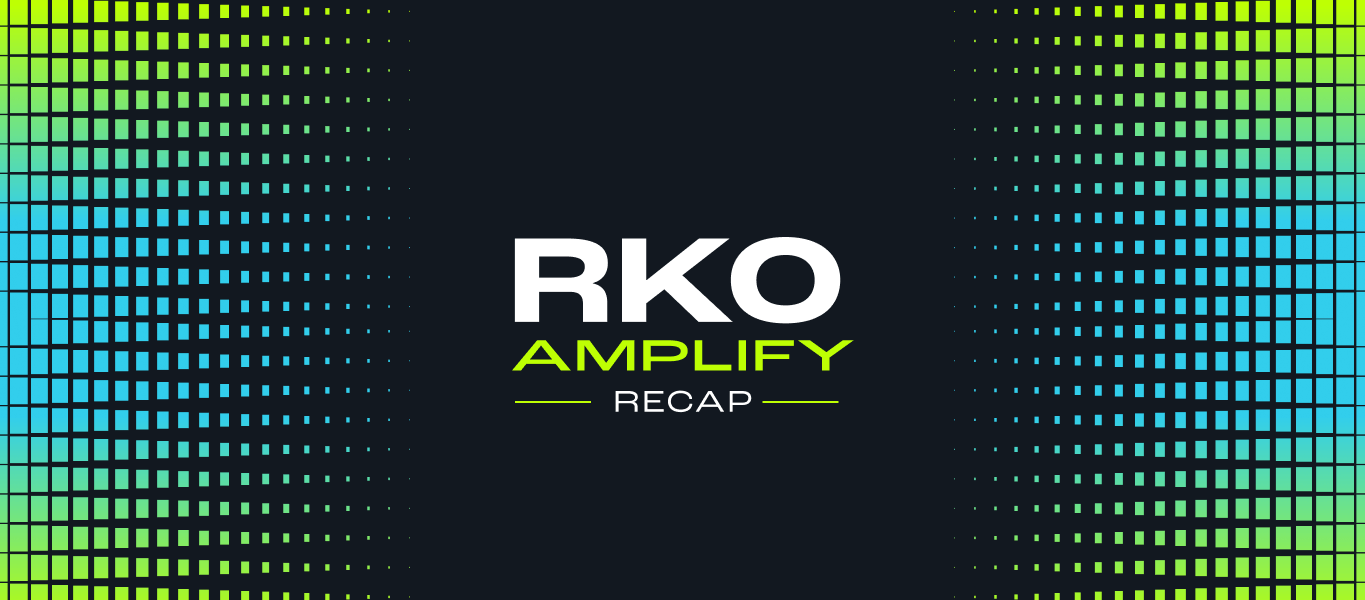The most effective checkout is the one your customers barely have to think about.
Once a shopper has decided to add an item to their cart, any perceived hiccup from that point on—be it slow page-loading speeds, cumbersome forms, unexpected currency or shipping issues, inflexible delivery options, a lack of guest checkout, or minimal payment options—decreases their satisfaction and chances of following through with a purchase.
This is particularly true for subscription brands, whose purchases recur on a set cadence. Getting their customers to commit has an even greater impact on the health of their recurring revenue business—as does getting those customers to stay committed via reliable and secure repeating charges.
Assessing your current checkout setup? In this article, we’ll dive into the benefits of one of the major players on the market today: Shopify Checkout. About 10% of U.S. ecommerce is powered by Shopify, and 9,000 merchants and counting are currently using the Shopify Checkout Integration for Recharge.
We’ll cover why a great checkout is a necessity for subscription brands, as well as how Shopify Checkout can lead to increased conversions, advanced customization opportunities, and more.
Key takeaways
- Offering a fast, seamless, and secure checkout is crucial for the success of any business—but especially for those who process recurring payments.
- Shopify Checkout’s conversion rates have been found to outpace competitors’ conversion rates by up to 36%.
- Recharge’s Shopify Checkout Integration allows subscription merchants to harness the power of both Shopify and Recharge for frictionless subscription checkout.
Why a seamless checkout experience is crucial for subscription growth
Making sure that customers can smoothly coast through your checkout is no simple technological feat. In fact, there’s a lot going on behind the scenes to make sure that your customers can go from “want” to “have” in as few clicks as possible.
The provider you choose is integral to this make-or-break moment in every shopper’s journey. In fact, the right checkout provider can even allow you to surprise and delight your customers with customization opportunities tailored just for them.
4 key benefits of the Shopify Checkout
1. Improved checkout conversions
Research of the leading ecommerce platform checkouts found that Shopify Checkout’s conversion rates were 15% higher than the competition on average—and up to 36% higher in some cases. That same study also found that Shopify’s accelerated checkout option, Shop Pay, can increase conversion by up to 50% versus guest checkout.
One key to this is Shop Pay’s vast identity network, which contains over 100 million users that are all pre-opted into one-click checkout. What this means is that when a Shop Pay account holder visits a website, Shopify can often recognize them before they’ve even taken any user action. From there, Shopify can immediately pre-fill the customer’s information for a faster and easier checkout process that shoppers are more likely to complete.
2. Native checkout that supports subscriptions
Through Shopify’s Subscription APIs, subscriptions are supported directly within Shopify Checkout. This enables other ecommerce applications and solutions like Recharge to build directly into the Shopify Checkout to bolster the subscription experience in key ways.
This means that your customers get to tap into the convenience of Shopify Checkout for their subscription purchases while continuing to reap the benefits of platforms like Recharge. Even if they haven’t visited your store before, Shop Pay account holders can benefit from auto-filled information at checkout for an easier and faster process.
In other words, this allows you to offer a unified checkout experience while simultaneously taking advantage of features like transactional SMS, customizable product bundles, robust analytics, and more.
3. Deeply integrated data in the Shopify admin
By centralizing more merchant and customer actions to take place directly in Shopify, Shopify Checkout can be enormously beneficial for merchants in streamlining their operations. For example, if a merchant is using Recharge’s Shopify Checkout Integration, all refunds will take place in Shopify, all payment method updates go through Shopify, and the merchant benefits from having fewer places to manage payment processors.
With the Shopify Checkout Integration, merchants can also leverage multi-currency, as well as Shopify’s native fraud protection features.
4. Customization opportunities
Customization is crucial for all aspects of ecommerce businesses today—according to Forrester, 89% of digital businesses are investing in personalization. Of course, the checkout is no exception to this rule.
By tailoring your checkout process to the unique needs of your customer base and products, you can set up shoppers for a more convenient experience and your business for better conversions.
Shopify allows a variety of customization options for their checkout, with use cases including:
- Pre-purchase upsells
- Post-checkout surveys
- Custom checkout banners
- Custom checkout fields for adding delivery instructions
- The ability to rename delivery options
- The ability to block the progress on a checkout when the cart line qualities exceed a certain limit
- And more
The power of Recharge x Shopify Checkout
Recharge has partnered with Shopify since November 2020 to offer our Shopify Checkout Integration (SCI), which leverages the Shopify Checkout and Shopify’s Subscription APIs. Our Checkout Conversion team is dedicated to supporting merchants who are looking to harness the power of both Recharge and Shopify.
Investing in your checkout and centering your customers’ needs at this pivotal point in the shopping journey doesn’t just help you increase your conversions. It can also boost the customer experience, build loyalty, and keep customers coming back to your business for the long haul.
Looking for more information on Shopify Checkout and Recharge? We’ve got all the details on converting to Recharge’s Shopify Checkout Integration, as well as the upcoming deadline for converting by October 2024.



